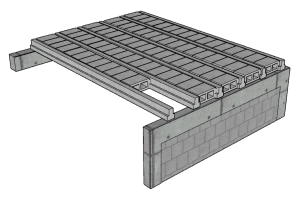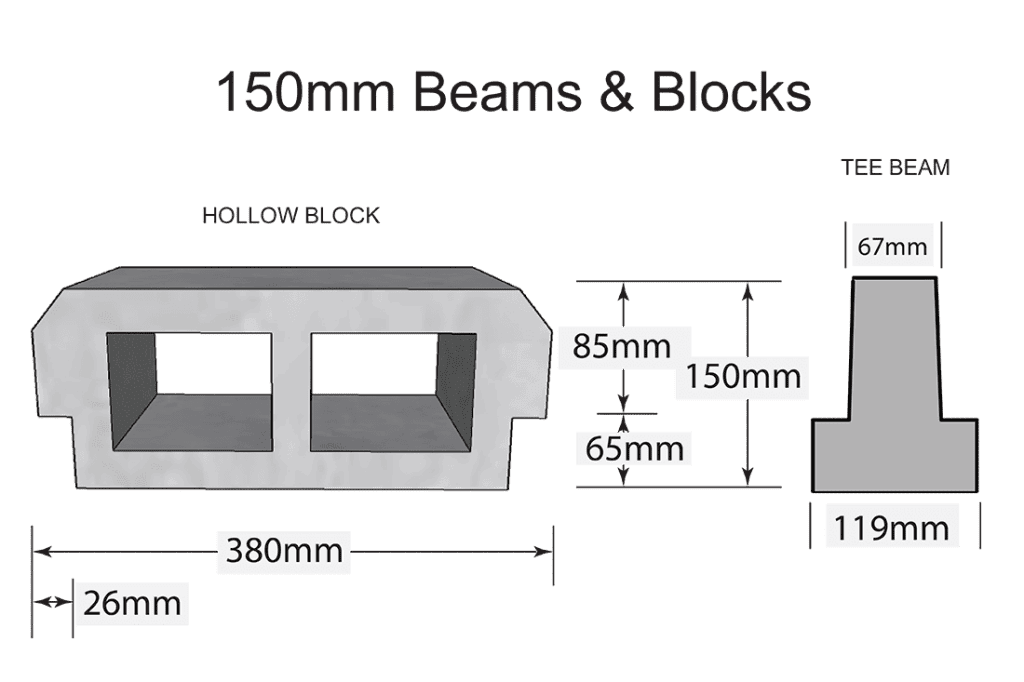Welcome to an insightful exploration of a versatile and eco-friendly flooring solution: Beam and Block Slabs. In the search for affordable construction practices, these slabs emerge as a key solution, offering durability, cost-effectiveness, and environmental friendliness. As we look into this topic, we will see the simplicity and effectiveness of Beam and Block Slabs. We shall also show their suitability for various construction projects.
In this article, we’ll go through the basics of block and beam slabs, their composition, installation process, and their benefits. Whether you’re a developer or a self-builder, this will equip you with knowledge regarding your concrete floor. They pave the way for practical construction without compromising on quality or functionality.
What is beam and block slabs?
This technology represents an alternative to conventional ready-mix concrete flooring solutions. In Kenya, where the tradition of “koroga” (mixing) concrete is widely used. These Slabs offer a simple approach to construction. Essentially, these slabs consist of precast concrete blocks strategically positioned and supported by concrete precast beams.

Instead of manually mixing concrete on-site, Beam and Block Slab arrive ready-made, significantly reducing construction time and costs. This method removes the need for specialized equipment and skilled labor. Making it accessible to a wider range of construction projects.
Moreover, the structural integrity and strength of this technology is capable of withstanding heavy loads. As well as excellent thermal and sound insulation. Their design allows for easy customization to fit specific project requirements, further enhancing their appeal.
In essence, this eco slab has changed the construction methodology, offering an alternative to traditional concrete mixing methods. With their efficiency, affordability, and durability, they are here to redefine the future of sustainable construction practices in Kenya.
The composition of beam and block technology
The composition of Beam and Block Slabs is simple yet robust. These slabs consist of precast concrete beams and blocks designed to interlock, forming a cohesive and durable flooring system.
The beams, typically made from high-quality concrete reinforced with steel, provide essential structural support, while the blocks, crafted from the same durable materials, fill the spaces between the beams, ensuring uniform load distribution. This composition not only enhances the strength and stability of the flooring but also simplifies the installation process, significantly reducing construction time and labor costs.
With their resilient composition, Beam and Block Slabs offer a sustainable and cost-effective flooring solution that withstands the test of time, making them an ideal choice for a wide range of construction projects.
Installation process
Installing Beam and Block Slabs is a straightforward process that starts with laying a solid foundation. Once the site is prepared and leveled, the precast concrete beams are placed at regular intervals, creating a strong framework. These beams act as the primary support for the floor.
Next, the concrete blocks are carefully positioned between the beams, filling the gaps and creating a solid surface. The entire floor is screeded with a mortar (cement and sand mix) to ensure stability. This efficient installation method minimizes construction time and labor, making it an attractive choice for projects of all sizes. With the installation complete, the result is a robust and reliable flooring solution that stands the test of time.
Benefits of the technology
The Beam and Block Slabs technology has many benefits that improve construction practices, offering an alternative solution for flooring needs.
Here’s a detailed look at the advantages:
Cost-effectiveness: Beam and Block Slabs significantly reduce construction costs by minimizing the need for expensive materials and specialized labor. With their simple installation process and ready made (precast) components, they lower overall construction cost while maintaining quality and durability.
Speedy Installation: The design of Beam and Block Slabs facilitates swift installation compared to traditional concrete mixing methods. Precast beams and blocks arrive ready-made, eliminating the time-consuming process of on-site concrete mixing and curing. This speeds up project timelines, allowing for faster completion and reduced labor costs.
Structural Integrity: Engineered from high-quality concrete reinforced with steel, Beam and Block Slabs offer exceptional structural stability and load-bearing capacity. The interlocking arrangement of beams and blocks ensures uniform weight distribution, enhancing overall flooring strength and durability.
Flexibility: Beam and Block Slabs can be customized to fit a wide range of architectural designs and project requirements. Their modular nature allows for easy adaptation to various layouts and structural systems, making them suitable for residential, commercial, and industrial applications alike.
Thermal and Sound Insulation: The solid construction of Beam and Block Slabs provides excellent thermal and sound insulation properties. This feature enhances indoor comfort levels by regulating temperature fluctuations and reducing noise transmission, contributing to energy efficiency and occupant satisfaction.
Environmental Friendly: Utilizing Beam and Block Slabs promotes environmental sustainability by reducing waste and resource consumption. The prefabricated components optimize material usage, while the efficient installation process reduces carbon emissions associated with traditional concrete methods.
Beam and Block Slabs offer a cost-effective, efficient, and environmentally friendly flooring solution that delivers superior structural integrity, flexibility, and comfort. Embracing this technology empowers construction projects with enhanced efficiency, durability, and sustainability, shaping the future of the industry towards more resilient and eco-conscious practices.

